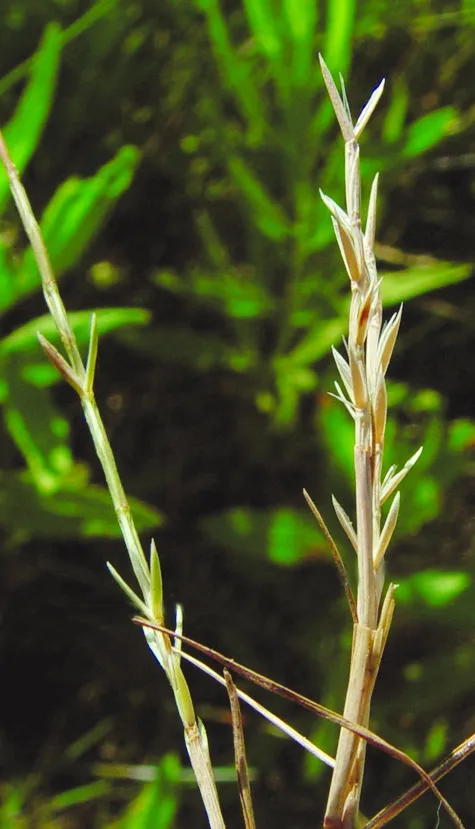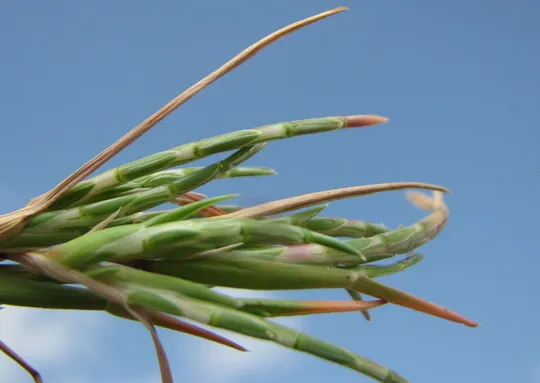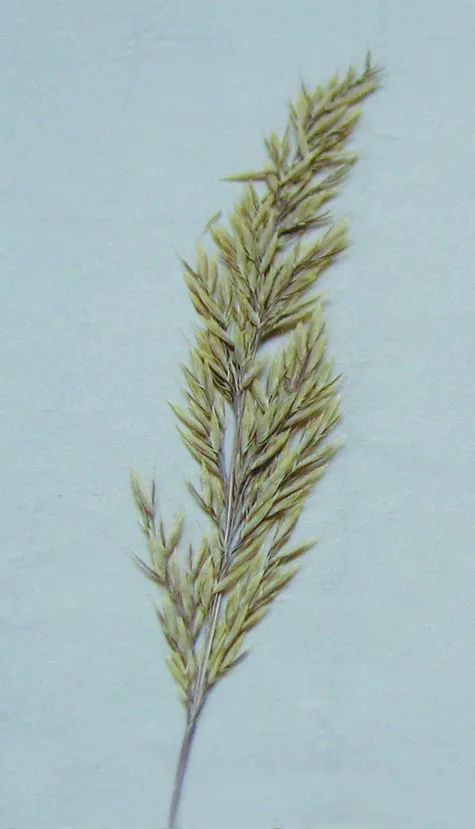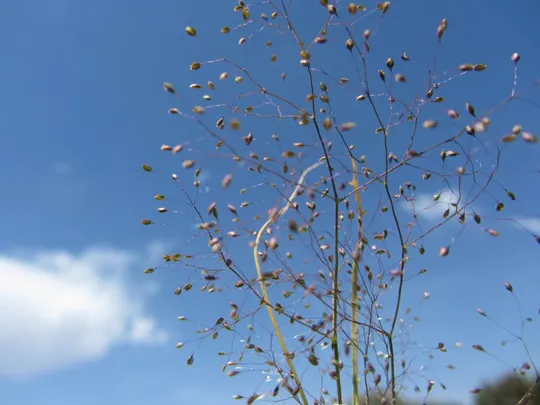Thread Thintail
Parapholis filiformis

Parapholis filiformis was known in
the past and grows today in only two regions: the Acre Valley and the Carmel Coast. In the Acre Valley it grows
in the Acre salt marsh (=Na'aman Estuary Reserve), in the Kishon salt marsh and
in the “Park and Drive” car park in the Haifa Bay. On the Carmel Coast P. filiformis grows in the salt ponds in Atlit, in the
salt marsh in Atlit and in Ma’agan Mikha'el. It is found only at these sites, and has disappeared from other sites where it once grew: the Dor Beach, and the beach section
from Atlit to the Carmel Coast. The Atlit salt marsh, located a hundred meters inland from the beach, has the largest P. filiformis population in the country. It was
first found in 1921, and 700 plants were counted in an area of 200 square meters in 1994. A large population was known from the Acre
salt marsh (Zohary, Vegetation Landscapes of Israel) and it is still a dominant species in patches of arid annual plants. The area where it grows is intended for construction, and therefore likely to be destroyed in the future.
Saline sand at the edge of salt marshes and
along the coast, together with Juncus acutus.
The genus Parapholis
is a small genus, which includes
only six species, all annuals that grow in the
Mediterranean Basin and in the Middle East penetrating to the
Atlantic region of Europe, where there are extensive salt marshes.
Five species of Parapholis grow in the Middle
East and two of them grow in Israel – P. filiformis and P.
incurva. The genus Parapholis is systematically close to the genus Agropyron, which
also has spikelets embedded along the rachis and two glumes perpendicular
to the stem. Formally, however, it is placed in a special tribe
in the Gramineae (Poaceae) family
(Tribe Monermeae), which in Israel include Parapholis species and Monerma cylindrica.
·
Parapholis filiformis is a rare species known from only six sites in
two regions, the Acre Valley and the Carmel Coast.
·
Most
sites are in danger of immediate destruction. The Acre salt marsh
site is intended for construction, in
the Haifa Bay most of the salt marsh area was developed. Most probably since
1994, the P.
filiformis population has been destroyed. At the Atlit Beach-Carmel Coast the
population has probably been eradicated by intensive
recreational activity. All the sites are very vulnerable due to the intensive leisure
activity on the beaches.
·
The
population size in
P. filiformis patches is of the order of hundreds
of plants.
·
There
is concern regarding the other countries along
the Mediterranean Coast.
·
P. filiformis has only one site
in a proposed reserve –
the Acre salt marsh in the Na'aman
Estuary Reserve.
Two nature reserves should be
demarcated and declared in the coastal marshes: one in Atlit and the other in
the Acre salt marsh. Their populations should be monitored and if necessary rehabilitated.
Parapholis filiformis
is a Mediterranean-Atlantic species that grows
along the coasts of all
the Mediterranean countries and islands. In the Middle East, it is found only on the
Turkish coast and islands and is extinct from Egypt, Syria and Lebanon.
Parapholis
filiformis is a small and rare annual plant of salt marshes and saline
sands on the Mediterranean coast. P. filiformis
seems inconsequential as a vegetation element, in terms of diversity and attractiveness. However, from the perspective
of nature conservation it is an excellent indicator of the state
of the salt marshes on the Mediterranean coast. Its habitat was destroyed due to the intensive development and recreational
activity on all the beaches. It is also a western and northern peripheral species, whose populations in Israel are more fragmented
than those of Turkey and Greece.
Current Occupancy Map
| 1000 squre meter pixel | 5000 squre meter pixel | 10000 squre meter pixel | |
|---|---|---|---|
| number of observations | 0 | 0 | 0 |
| in total pixels | 0 | 0 | 0 |
| Family | Gramineae |
| Classification | On the endangered species list |
| Ecosystem | Coastal area |
| Chorotype | Mediterranean |
| Conservation Site | Atlit Salt Marsh, Acre Salt Marsh |
| Rarity |
1
3
6
|
|---|---|
| Vulnerability |
0
4
4
|
| Attractiveness |
0
0
4
|
| Endemism |
0
0
4
|
| Red number |
1
4.2
10
|
| Peripherality | N |
| IUCN category | DD EW EX LC CR EN VU NT |
| Threat Definition according to the red book | Endangered |
 Based on:
Based on:






